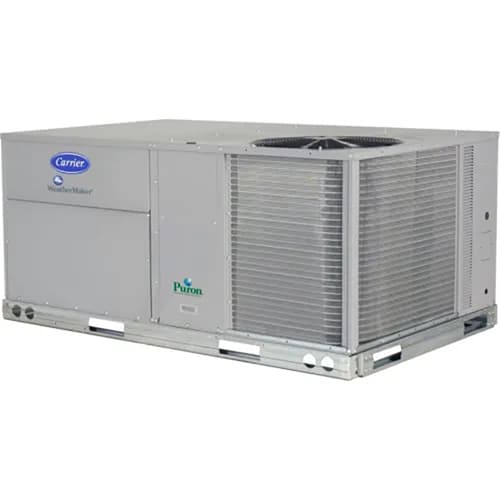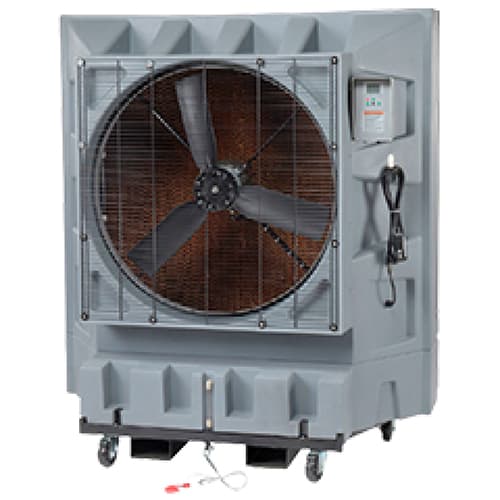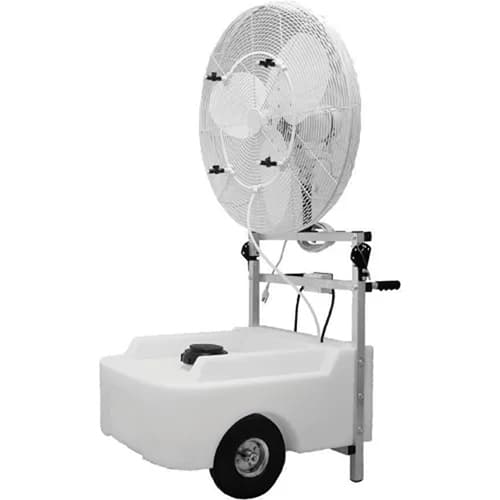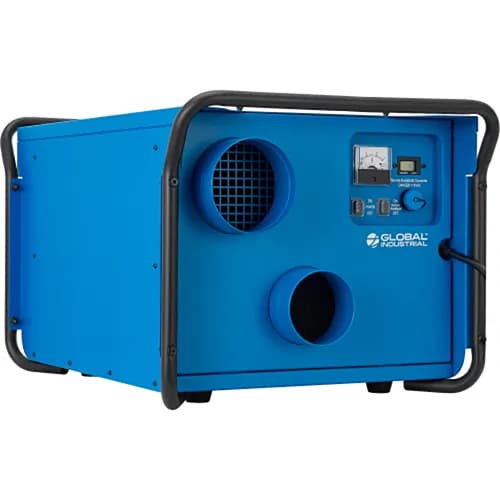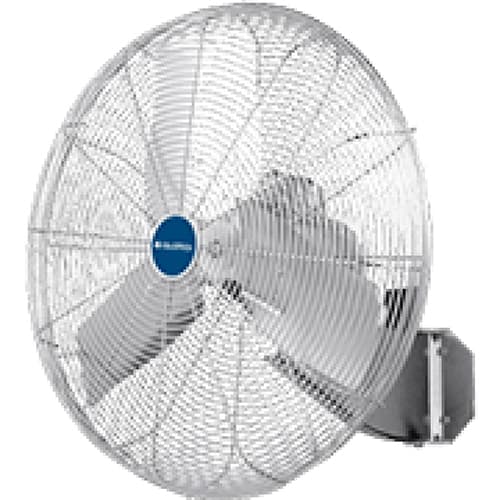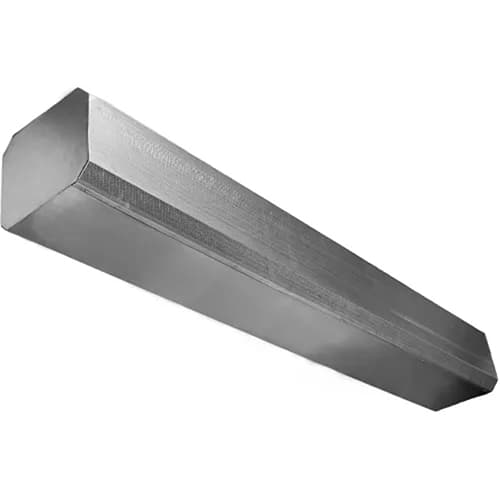Industrial air conditioning and eco-friendly cooling technologies can help businesses cut energy costs and improve workplace comfort. When the blistering summer heat rolls in, it doesn’t just make people uncomfortable; it disrupts productivity, puts additional strain on equipment, and sends your energy bills soaring. Industrial air conditioning might be the go-to solution for many, but it’s far from the only one. With each season getting hotter (and staying that way longer), it’s time to look beyond standard AC units and into the broader world of industrial cooling.
Let’s dig into some of the newest, most effective eco-friendly industrial cooling technologies out there. Whether you manage a massive, sprawling warehouse, a hectic stockroom, or a mixed-use facility with offices and production areas under one roof, we’re happy to tell you there’s a cooling solution tailored just to your needs. And in many cases, the best setup involves combining multiple systems for targeted performance and energy savings.
What Industrial Air Conditioning Challenges Are You Facing in Your Space?
That’s the big question, because every facility is different and a one-size-fits-all approach just isn’t going to cut it. So before deciding on the best room air coolers for your needs, you’ve got to understand the problem. Because even within the same building, you may very well need different eco-friendly industrial cooling strategies for different zones.
Identifying your facility’s unique industrial cooling challenges is key to creating an energy-efficient HVAC strategy:
- Are your workers highly active? Always on the go? Well, more movement means more body heat, so fans or evaporative coolers might be essential to keep these employees cool in the summer months.
- Is your facility in a humid climate? That affects what type of cooling system will work best. Some coolers thrive in humidity, others just can’t handle it.
- How high are the ceilings in your office/facility? Hot air rises, which can trap heat above work areas unless it’s circulated properly.
- Is your workforce split between desk work and physical labor? If so, you’ll almost certainly have to customize how each area is cooled.
- Are doors frequently being opened? A typical example of this is in warehouses, loading docks, and many retail spaces. The more the doors are opened, the more cool air you lose, and that can be a big waste of money.
Central Cooling vs. Portable Cooling: You Probably Need Both.
Central air conditioning is the cooling backbone of many industrial facilities. It offers consistent temperature control, cleaner air, and quiet operation. But for most situations, it just isn’t enough. Central AC provides the foundation, while portable cooling units deliver targeted relief in hot zones.
Portable industrial cooling units step in to fill the gaps. Maybe there’s a sunny corner of your warehouse that overheats by noon, or a workstation with lots of heat-generating equipment. Bringing a portable AC unit into these can eliminate these annoying hot spots without cranking up the AC for the entire facility.
To sum up, if you want to know how to reduce HVAC energy costs, the following combo approach works best:
- Central AC is your hero, providing baseline cooling and improving indoor air quality.
- Portable solutions like fans, portable evaporative coolers, and industrial misting fans offer targeted relief where it’s needed most.
How New Tech Is Changing the Cooling Game
If your HVAC system is more than 10 years old (and there’s a high chance it is), it might be doing the job, but at a cost; and that’s why smart industrial cooling technologies matter. Modern systems include smarter controls, greener materials, and seamless integration with building systems. And energy-efficient HVAC systems equal much lower running costs.
Key innovations include:
- Bluetooth and Wi-Fi enabled thermostats and equipment that allow for real-time monitoring and control, often from a smartphone.
- Programmable timers that let you adjust operation to your schedule, preventing waste during off-hours.
- Eco-friendly refrigerants that lower your carbon impact.
- Energy-efficient motors and fans that use less electricity while maintaining airflow.
These upgrades aren’t just fancy bells and whistles. They actually add up to thousands of dollars in annual savings and are crucial in building energy-efficient HVAC systems.
Why HVAC Energy Efficiency Matters
If you’re wondering how to reduce HVAC energy costs, you should know an inefficient HVAC system is a money pit. But beyond cost, energy inefficiency affects everything from equipment lifespan to employee satisfaction. Here’s what an energy-efficient system brings to the table:
- Reduce HVAC Energy Costs While Enhancing Comfort The Department of Energy reports that HVAC systems account for nearly 35% of total energy use in the average commercial building. Efficient equipment can cut this by up to 20% or more. That adds up to significant savings year after year.
- Reduce Carbon Footprint Energy-efficient cooling systems use less power, which translates into fewer greenhouse gas emissions. If your company is aiming for net-zero goals, optimizing your HVAC system is a key step toward eco-friendly industrial air cooling.
- Increase Equipment Lifespan When you’re running your system at peak efficiency, you’re reducing natural wear and tear. And that means fewer breakdowns (and fewer days working in unbearable heat) and a greatly increased lifespan for costly AC components.
- Improve Indoor Air Quality Energy-efficient systems are way better at balancing humidity and ventilation, which helps reduce dust, allergens, and airborne contaminants. So, you and your coworkers can breathe easy throughout the day.
- Get Happier Staff and Customers It’s true. When you’re working in a cool, clean, well-ventilated space, you feel better. You work better. And as a customer, you’re more likely to spend more time browsing (essential in retail spaces). It just makes financial sense in many ways.
Top Four Strategies to Boost Cooling Efficiency
Even the best system needs support. Here’s how to get the most out of your investment:
- Schedule Regular Maintenance Check and replace filters, inspect ductwork, and calibrate your thermostats. Preventative maintenance like this ensures you catch issues before they turn into costly repairs and system overhauls.
- Use Smart Controls They really are a game-changer. Bluetooth and programmable thermostats let you automate when and where cooling happens, often at the touch of a button. No more wasting energy after hours or on weekends.
- Seal and Insulate Poor insulation can lead to massive energy losses. So do a building check for leaks. Seal doors, windows, and loading docks. Insulate ducts. Keep the cool air inside, where it belongs, and lower your running costs at the same time.
- Zone Your Eco-Friendly Industrial Cooling As we mentioned earlier, not every part of the building needs the same temperature. Use portable equipment or zoning controls to direct resources only where they’re needed.
Which Cooling Products Are Right for You?
Now that you know the basics of industrial air conditioning and how to balance a system, let’s take a closer look at the most effective industrial cooling technologies and what they’re best used for:
Central Air Conditioners
Best for: Full-building cooling, consistent indoor climates, high-value spaces like offices or temperature-sensitive storage.
Central Air Conditioners
Best for: Full-building cooling, consistent indoor climates, high-value spaces like offices or temperature-sensitive storage.
- Central industrial air conditioning systems deliver steady, reliable cooling across large spaces
- They filter and circulate air, helping improve indoor air quality.
- Great for reducing noise pollution compared to portable fans or units.
- Long-term cost savings through efficient operation, especially when paired with smart thermostats.
Evaporative Coolers (AKA Swamp Coolers)
Best for: Hot, dry environments like warehouses or garages in the Southwest.
- Portable evaporative coolers for commercial use are both convenient and energy-efficient.
- Work by passing hot air through a wet filter or pad, cooling it down as water evaporates.
- No refrigerants required, which makes them a top choice for eco-friendly industrial cooling.
- Portable swamp cooler options can cool areas by 10 to 25°F depending on humidity levels.
- Excellent evaporative coolers for commercial use.
Misting Fans
Best for: Outdoor spaces, semi-open buildings, event venues, and loading docks. Think about outdoor weddings, parks, and places where there is a lot of exposure to the sun.
- Misting fans use fine water mist pushed by a fan to create rapid cooling through evaporation.
- Excellent for reducing heat stress in physically demanding environments.
- Modern models offer adjustable mist levels and wide coverage.
- Look for industrial misting fans for sale that offer portability and coverage.
Dehumidifiers
Best for: High-humidity zones like coastal areas, storage spaces, or facilities with water-intensive processes (food & beverage processing, chemical manufacturing, pulp and paper mills).
- These are portable units that remove moisture from the air.
- Lower humidity makes the space feel cooler and prevents mold or mildew.
- Ideal for warehouses storing paper goods, electronics, or perishables.
Cooling Fans
Best for: General airflow, hot work zones, and areas with high ceilings.
- Simple, portable, and incredibly versatile.
- Help with body heat dissipation and sweat evaporation, making workers feel cooler.
- Improve ventilation, which can reduce heat buildup and indoor air pollutants.
- A key component of portable cooling units for large spaces.
Air Curtains
Best for: Entrances, open bays, warehouse doors, and retail front doors.
- Create a barrier of high-velocity air that separates inside and outside environments.
- Reduce energy loss in industrial facilities.
- Keep cooled air in and hot air out, even with open doors.
- Also prevent bugs, dust, and pollutants from entering the facility.
Make This Your Coolest Summer Yet
Discover the best industrial air conditioning and energy-efficient cooling solutions. Visit our Cooling Equipment Guide for expert advice and explore portable and central HVAC options tailored to your facility.
With the right combination of eco-friendly industrial cooling, portable evaporative coolers, smart tech, and regular maintenance, you can keep your workers productive, your equipment protected, and your energy bills under control.
Visit our Cooling Equipment Guide to learn more and explore the full range of industrial cooling technologies built for today’s workplace. And if you need any help selecting the right products, one of our experts will be happy to help you out.
The information contained in this article is for informational, educational, and promotional purposes only and is based on information available as of the initial date of publication. It is the reader’s responsibility to ensure compliance with all applicable laws, rules, codes, and regulations. If there is any question or doubt in regard to any element contained in this article, please consult a licensed professional. Under no circumstances will Global Industrial® be liable for any loss or damage caused by your reliance on this article.
